Author: Jake Huolihan
Most of the hops reviewed so far for The Hop Chronicles have been fairly new varieties, many of which were in the experimental phase, and perhaps unsurprisingly, tasters have noted they would go well in hoppy styles such as American Pale Ale and IPA. With this in mind, I was curious how blind tasters might rank more traditional “old world” hops and jumped at the opportunity to test one of my favorite continental varieties, Czech Saaz. Probably most famous for its use Bohemian Pilsner, namely Pilsner Urquell, a personal favorite of mine, Saaz is used by brewers to make any number of lager styles. In my experience, I’ve found it tends to impart very floral and spicy characters to the beers I use it in, I was excited to see if this would pan out with the panel of blind tasters!
Alpha: 4%
Beta: 3 – 5%
Cohumulone: 24 – 26
Total Oil (mL/100g): 0.3 – 0.7
Myrcene: unavailable
Humulene: 0.28 – 0.4
Caryophyllene: unavailable
Farnesene (% of oil): 14 – 22
Linalool (% of oil): 0.3 – 0.5
Total Polyphenoles: 5.5
Parentage: Native Czech Republic

The first consideration I had to make when designing the SMaSH Czech Saaz recipe was the hop’s low AA%. Desiring to keep the late hop schedule similar between The Hop Chronicles beers, I distilled my choices down to two– either use over 1.25 lbs of hops for the 11 gallon batch to keep the calculated bitterness consistent with my preferred recipe, or dial back the bitterness a bit by easing up on the 60 minute kettle addition. I chose the latter and still ended up using a whole pound of hops. I was quite excited to brew this beer!
The Hop Chronicles Czech Saaz Pale Ale
Recipe Details
| Batch Size | Boil Time | IBU | SRM | Est. OG | Est. FG | ABV |
|---|---|---|---|---|---|---|
| 11 gal | 60 min | 44.9 IBUs | 5.0 SRM | 1.055 | 1.009 | 6.1 % |
| Actuals | 1.055 | 1.009 | 6.0 % | |||
Fermentables
| Name | Amount | % |
|---|---|---|
| Pale Malt, Golden Promise (Thomas Fawcett) | 22.625 lbs | 100 |
Hops
| Name | Amount | Time | Use | Form | Alpha % |
|---|---|---|---|---|---|
| Saaz | 85 g | 60 min | Boil | Leaf | 4 |
| Saaz | 85 g | 30 min | Boil | Leaf | 4 |
| Saaz | 60 g | 5 min | Boil | Leaf | 4 |
| Saaz | 120 g | 30 min | Aroma | Leaf | 4 |
| Saaz | 120 g | 5 days | Dry Hop | Leaf | 4 |
Yeast
| Name | Lab | Attenuation | Temperature |
|---|---|---|---|
| San Diego Super Yeast (WLP090) | White Labs | 80% | 65°F - 68°F |
Download
| Download this recipe's BeerXML file |
| MAKING THE BEER |
A few days prior to brewing, I whipped up a starter of WLP090 San Diego Super Yeast, using my preferred yeast calculator to determine the proper size.
I purchased my ingredients the day prior to brewing then woke up early the following morning and began heating my RO water to strike temperature.Based on Bru’n Water recommendations, I added the appropriate amount of minerals and acid to achieve a “yellow balanced” profile. I proceeded to mash in to hit my target temperature.
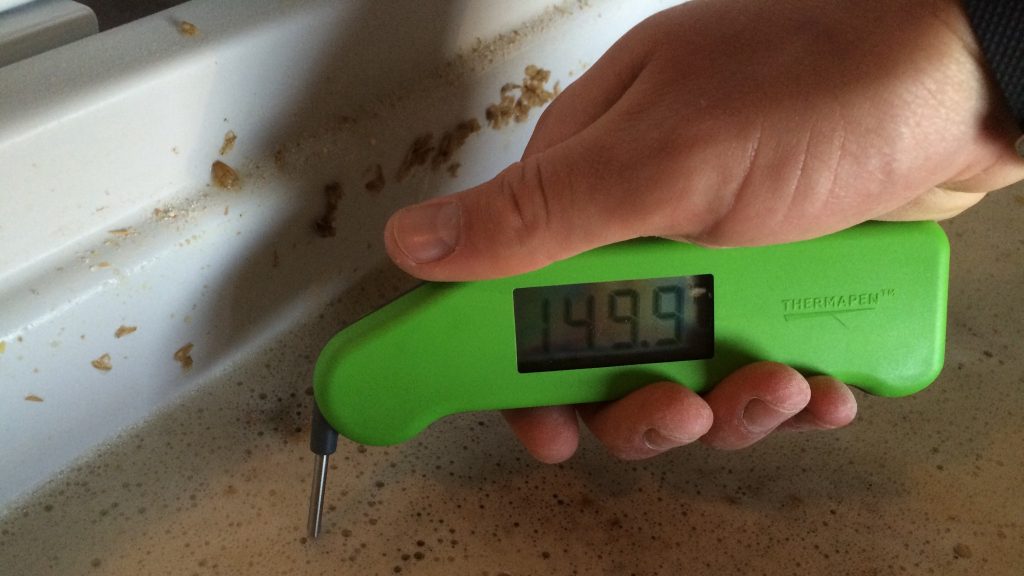
After a 60 minute rest, I collected the wort using a standard batch sparge method.
While the sweet wort was coming to a boil, I weighed out the hop additions. Unable to procure pellets, I was forced to go with whole cone hops, which can be a pain when measuring out large amounts.
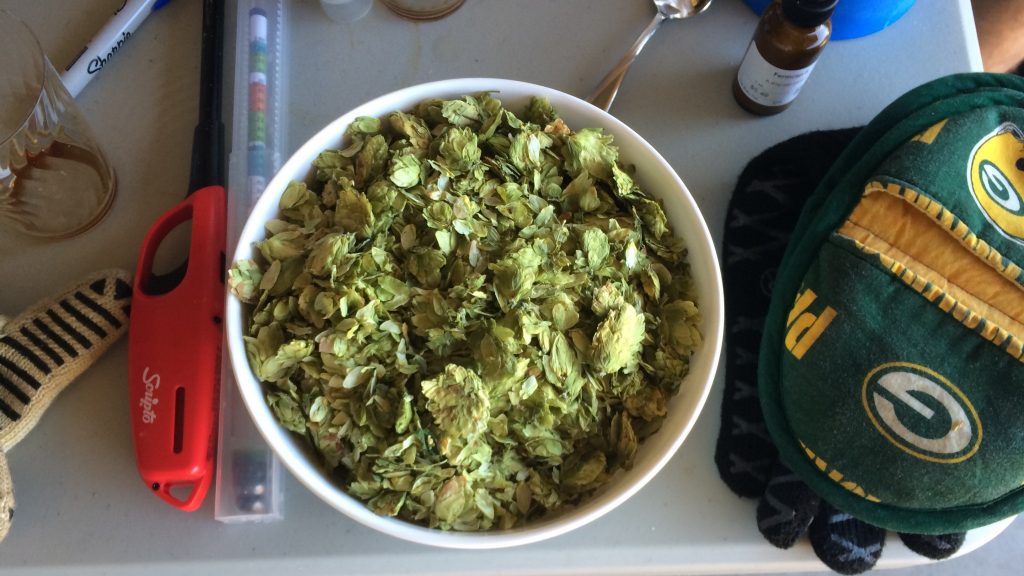
Hops were added at the appropriate times during the 60 minute boil, after which it was chilled to 150˚F/66˚C and the hopstand charge was tossed in.
It was at this point I wondered how many people in the world had ever performed a hopstand with Czech Saaz… in an ale. I left the wort alone 30 minutes before I finished chilling to my target fermentation temperature and split it equally between two 6 gallon PET carboys.
The filled carboys were placed in my temperature controlled fermentation chamber set to 66˚F/19˚C and hit with pure O2. After harvesting some yeast for future use, I split the starter equally between the two batches, noticing fermentation activity 12 hours later.
I began gently ramping the temperature to 72˚F/22˚C five days into fermentation and observed there to be almost no activity a week into fermentation, so I added the dry hop charge, which created a respectable green bloom on top of the beers.
I took a hydrometer sample a few days later to ensure the beers had reach the predicted finishing gravity.
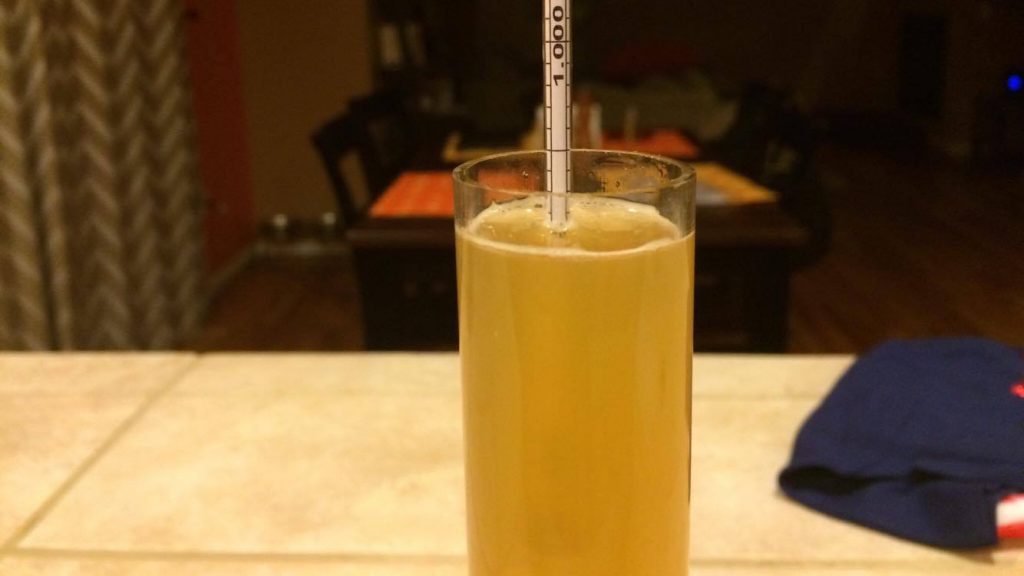
I then proceeded to cold crash the beer, fine with gelatin, then keg.
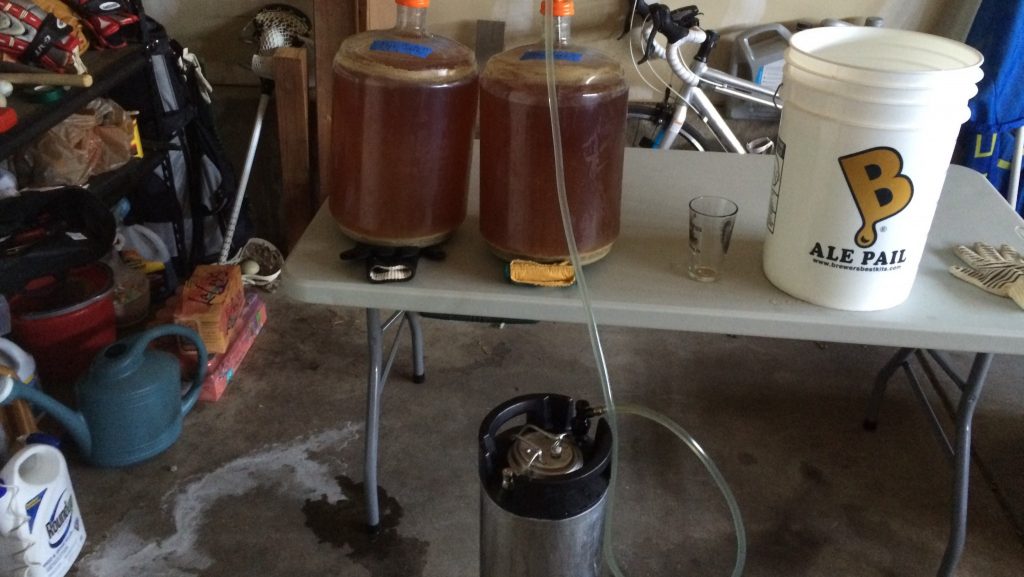
After a brief period of burst carbonation and another few days at serving pressure, the beer was nicely carbonated and mostly clear.
| METHOD |
Participants were instructed to focus only on the aromatic qualities of the beer before evaluating the flavor. For each aroma and flavor descriptor, tasters were first asked whether or not they perceived the characteristic with “yes” selections taking them to a page instructing them to write-in the perceived strength of that particular characteristic on a 1-9 scale (weak to strong); endorsing “no” resulted in the taster skipping over the rating of that descriptor directly to the next descriptor. Once the data was collected, the average rating of each aroma and flavor descriptor was compiled with all “no” responses being assigned a score of zero.
| RESULTS |
A total of 30 people participated in the evaluation of this beer during one of The Brew Hut‘s homebrew nights, all blind to the hop variety used until they completed the survey. The average aroma and flavor ratings for each descriptor were plotted on a radar graph.
Average Ratings of Aroma and Flavor Perceptions
The 3 characteristics endorsed as being most prominent by participants:
| Aroma | Flavor |
| Tropical Fruit | Spicy/Herbal & Citrus (tie) |
| Floral | Floral & Tropical Fruit (tie) |
| Spicy/Herbal | Pine |
The 3 characteristics endorsed as being least prominent by participants:
| Aroma | Flavor |
| Berry | Berry |
| Pine | Onion/Garlic |
| Onion/Garlic | Grassy |
When asked to rate the pungency/strength of the hop, the majority of tasters perceived it as being quite strong.
Tasters were then instructed to identify beer styles they thought the hop would work well in. While Pale/IPA again led the pack, Pale Lager styles came in a close second, fittingly.
Finally, participants were asked to rate how much they enjoyed the hop character on a 1 to 9 scale.
My Impressions: I’ve had pretty extensive experience with Czech Saaz, not only because it’s a feature hop in a few of my favorite commercial beers, but I use it quite a bit in my own brewing. But I’ve always allocated it for lager styles where I don’t use much at all, this beer was by far my most liberal use of the Saaz, and I really couldn’t be happier with the way it came out. I got a nice floral bouquet on the nose, almost like marmalade, not in a fruity way but more like those gel candles my grandma used to put out in the 90’s. The overall aroma wasn’t as strong as I expected considering the liberal late kettle and dry hop additions, so for me it didn’t really stand out. The flavor is where I found this hop to shine. While the floral and marmalade aroma came through when tasting, I noticed a pleasant peppery spice note on the back end that lingered quite awhile after each sip. Ultimately, I felt the intensity of the flavor pretty much matched that of the aroma in that it wasn’t extremely strong, though I would say it was more pronounced.
| CONCLUSION |
I was quite boastful I could make this brew a really nice wannabe Pilsner and maybe even fool some people into thinking it was one, despite the arguable overuse of Czech Saaz and fermenting with an ale yeast and ale temperature. However, after tasting the first few pints, I realized the effort was futile– this beer was something else entirely. Saaz is a great hop, I love it and will continue to use it extensively as the primary hop in my lagers. I’m not certain it should be a main addition to many hoppier ale styles, though perhaps it has a place given the fact Pale/IPA was the most common style participants thought it’d work well with. Admittedly, there was something validating about the fact many participants felt the hop would work well in a pale lager, as that’s what it is often used for. Overall, this beer combined with The Hop Chronicle results reminded me that classic continental hops viewed by some as old and boring can absolutely provide a wonderful flavor. This beer definitely made me rethink exploring some of these old world hops and using them as part of a blend in more new world styles than I’m used to.
What has your experience been with Saaz? Have you noticed any difference between Czech varieties and those grown in other regions? Please share your thoughts in the comments section below!
Support Brülosophy In Style!
All designs are available in various colors and sizes on Amazon!
Follow Brülosophy on:
FACEBOOK | TWITTER | INSTAGRAM
If you enjoy this stuff and feel compelled to support Brulosophy.com, please check out the Support Us page for details on how you can very easily do so. Thanks!




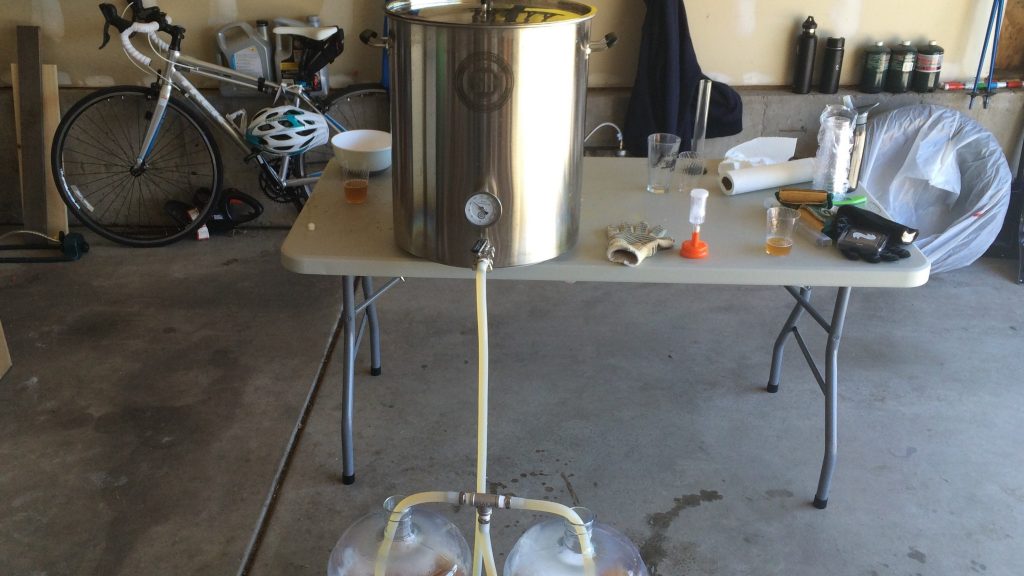
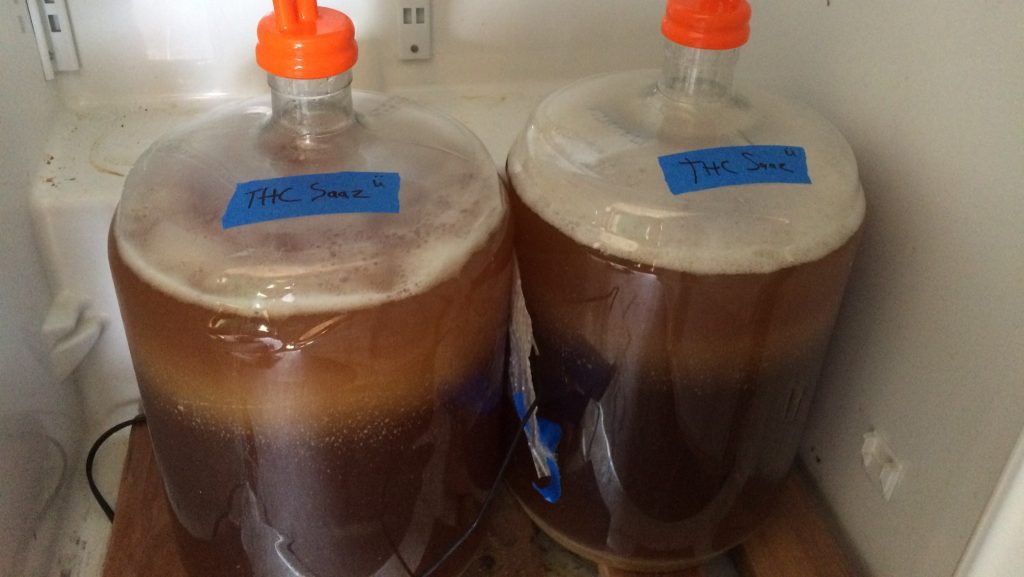
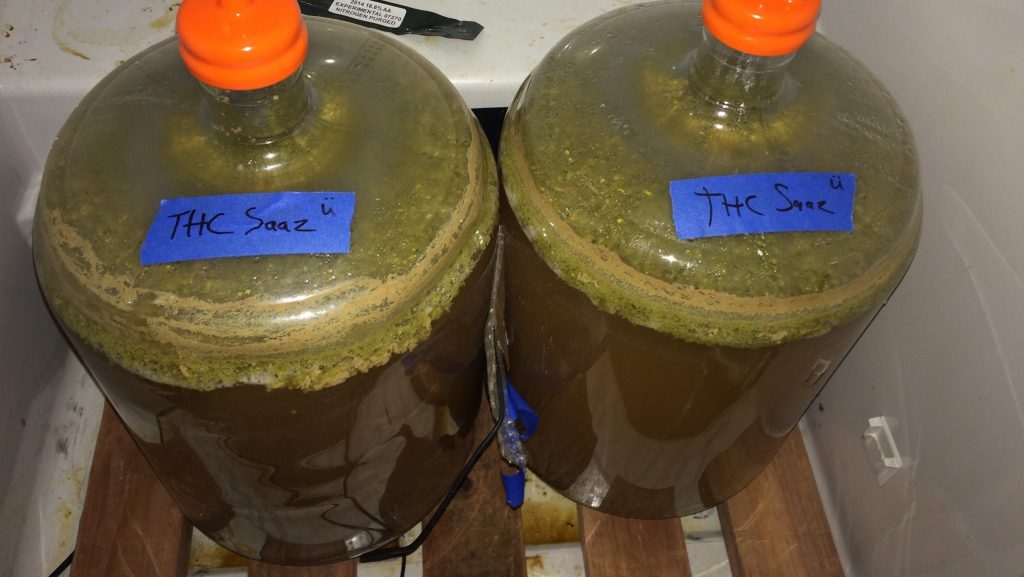
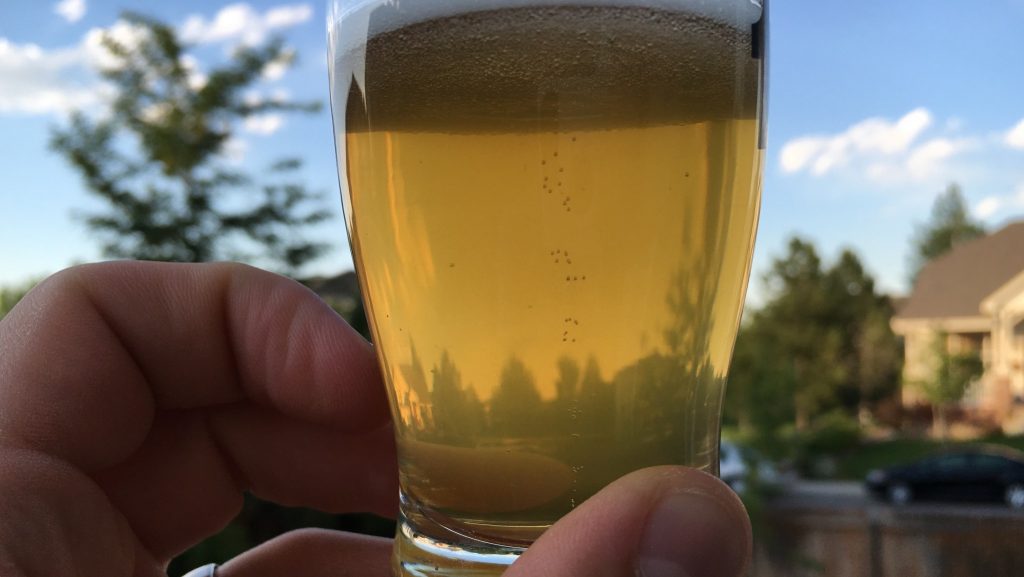

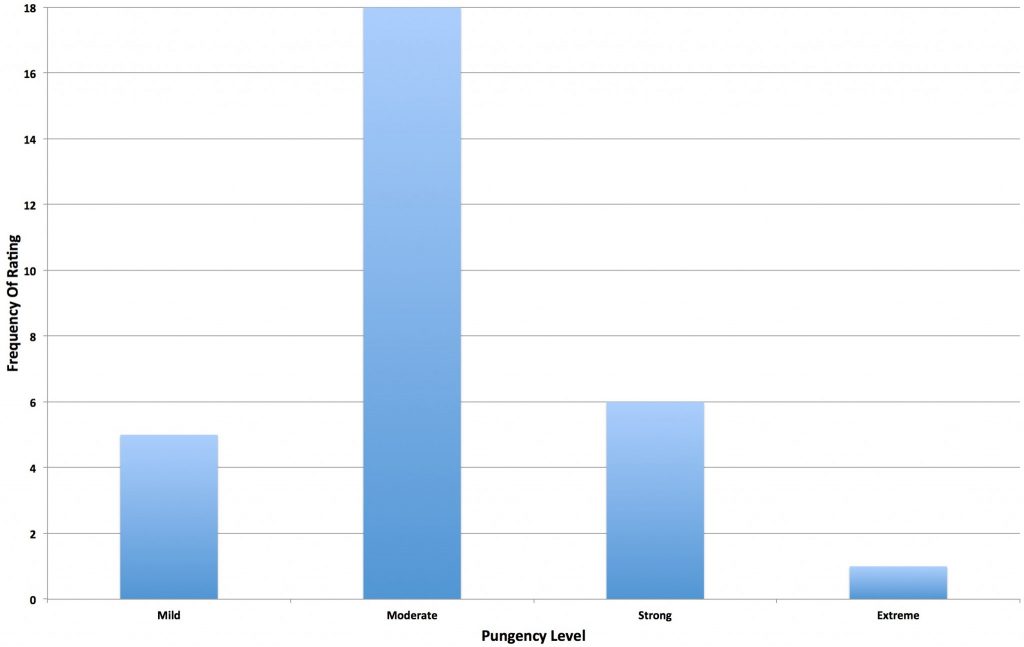
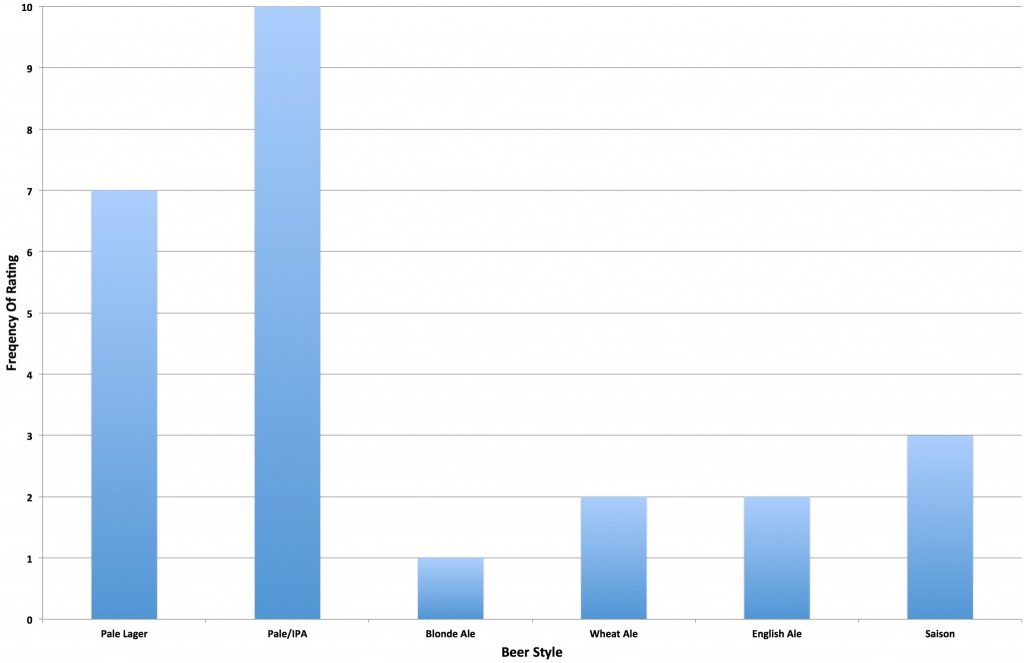
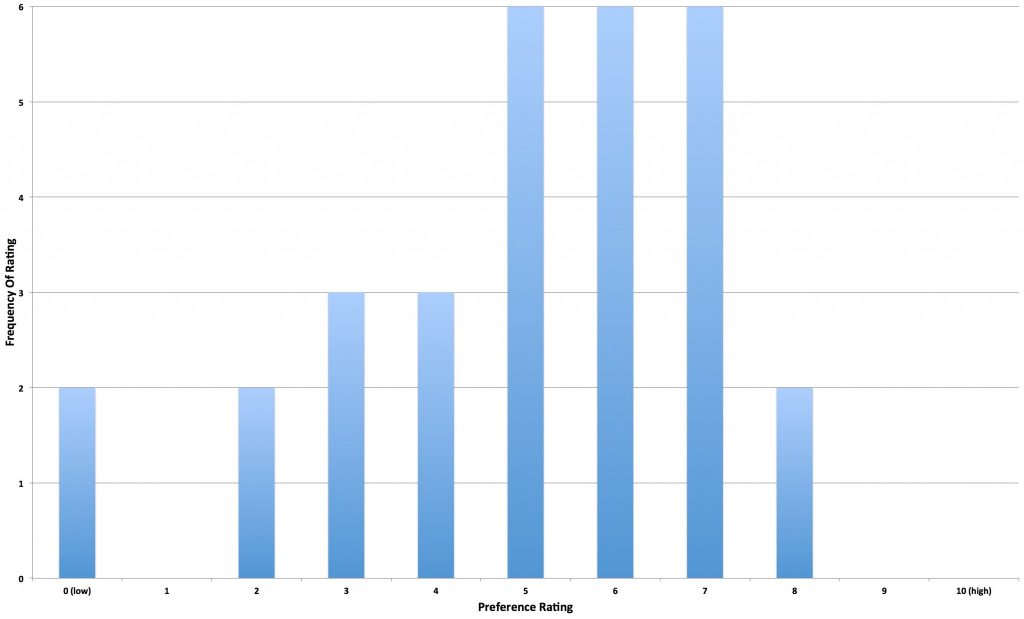










14 thoughts on “The Hop Chronicles | Czech Saaz (2015) Pale Ale”
Last month I made a pale ale using Wyeast 1332 Northwest Ale yeast, and dry hopped with Saaz pellets. I have used these hops many times in pale ales, and even found them in a historical recipe in Ron Pattinson’s book “The Home Brewer’s Guide to Vintage Beer.”
US Saaz was a go-to for my ordinary bitters for a while. I really enjoyed those beers.
Always been curious about how the Saaz hop would do in this style of beer .. Now I know !! Thanks again !
I love Saaz. Definitely works in pale ales. Tried them once in a brown ale too for the hell of it. It was “interesting”. Not bad, just different.
How was fining with gelatin when you had a bunch of leaf floating on top?
I did get some pellets for the dry hop because I didn’t want to deal with that mess haha. It fined well, not crystal clear, but not hazy.
I’m thrilled to read these results in that the dry hopping hasn’t produced excessive grassiness flavor that I’ve been told to expect. And as a result of this, I’ve been loath to dry hop my BoPils. I wish I had the set-up to be able to carry out such split-batch exbeeriments me-self. Exactly how long did you dry hop? And was this at room temp too?
I dry hopped this for three days before cold crashing. Kegged on day 14 into brewing. The hops had 7 days contact with the beer
I use Saaz in some British styles as mentioned by Bob. Works very well with EKG in pales when dry hopping (floral, perfume). Great as a late addition for stock ales (any xbmt about alpha and beta acids when aging beer for 9 months+?). Never gone 100% Saaz but it has a really refreshing edge to it in commercial beers.
Just a small note, I think you mislabeled your flameout addition (120g) as a 30min addition in the table above.
Love reading the hop chronicals, keep up the good work!
PS – also a big fan of Pilsner Urquell!
It was a hop steep, 30 min aroma in BS
Ah I see. Thanks.
These hop chronicles are a fantastic tool for home brewers! I’d love to see a site/page where all the spider charts could be compared, on a selected basis. It would be much more useful and objective than the hop substitution charts that are floating around and I’m sure it would get a ton of hits. Even a site where all the essential info to-date could be referenced would be a great. So great and thanks for all the hops.
I recently used it in a “Czech” farmhouse. 5 gallon batch, 4 oz at 15 minutes or less, Weyermann Dark Czech malt, dupont yeast.
The beer finished with a strong woody component. Hints of cinnamon and clove. Quite unexpected considering Dupont tends to be more restrained on the spice than some other yeasts. Not a dumper but not a keeper.
This is fantastic. I’ve been thinking of doing something along these lines and a search brought this up at the top.
If I was gonna replicate your recipe with pellets instea, in a standard 5gal brew, how much grams would I use? Is there a x grams leaf = y grams pellet formula?